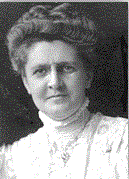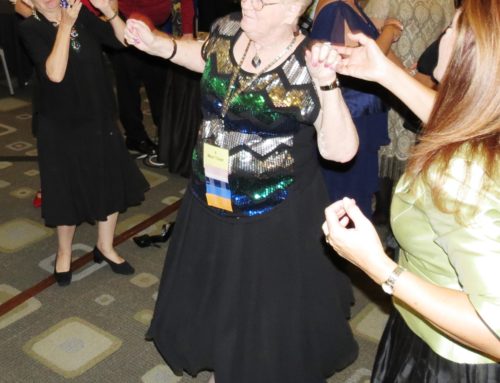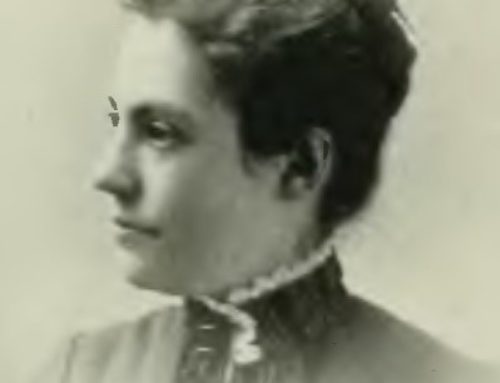She was an American activist for women’s rights, a key temperance reformer, journalist and a woman of great moral conviction. She spent most of her early life campaigning for a woman’s right to vote. Her experience as a national newspaper woman helped her advance the cause during her travels across the country. To many, Cornelia Templeton Jewett Hatcher was a hero.
Cornelia was born in Brown County, Wisconsin, in January, 1867. Her parents were Alexander and Cornelia (Fuller) Templeton. She married John Jewett in 1888. The couple had one child, a daughter, Hazel, born the following year. Data, however from both the 1900 and 1910 United States census shows Cornelia divorced and living with her daughter in Evanston, Illinois. Her occupation is listed as journalist and editor.
When the executive committee of the National Woman’s Christian Temperance Union held its executive session in Cincinnati, Ohio, in November, 1903, they elected Cornelia the managing editor of the Union Signal, the official paper of National Woman’s Temperance Union. Preceding this appointment, beginning in 1897, Cornelia had served the WCTU as the paper’s associate editor. She would be re-elected editor at least three more times (1905, 1907 and 1909). An article published in the “Clubs and Societies” section of The Washington Post on November 21, 1909, reported Cornelia (managing editor of the Union Signal and president of the Illinois Woman’s Press Association) as one of two new names added to the roster of the League of American Pen Women. Illinois Woman’s Press Association archives list Cornelia as its tenth president serving from June 1909 to June 1910. The Illinois Woman’s Press Association Manual 1910-1911 records Cornelia “spending the year 1910-1911 in Alaska, on leave of absence from the Union Signal office, as special representative of the WCTU in that territory.”
In the summer of 1909, Cornelia travelled to attend the world’s fair, the Alaska-Yukon-Pacific Exposition, on the grounds of the University of Washington, in Seattle, Washington. During this trip she also toured Alaska and met Robert Lee Hatcher. Mr. Hatcher is considered the first to file a lode gold claim on Skyscraper Mountain in what is now known as the “Hatcher Pass” in 1906. He made several other gold discoveries in the Hatcher Pass area.
She returned to Alaska on a press tour in 1910. So taken with Alaska and Hatcher, Cornelia and Robert were married in Seattle on March 5, 1911. The couple originally lived in Knik, before moving to Wasilla, Alaska. While living in Knik, she assisted in organizing the first WCTU chapter in the state. Her husband was instrumental in discovering, developing (then selling) several gold mines into the 1930’s.
The National Council of Woman Voters placed Cornelia in charge of its publicity bureau in February, 1911. In her years as head of the bureau she was heralded as a coadjutor to council president Emma Smith De Voe. Their friendship formed a force capable of setting reform goals and effecting their achievements.
Cornelia was president of the Alaskan chapter of the Woman’s Christian Temperance Union from 1913 until 1924. Cornelia often stated, “…that it was the constructive women of Alaska who brought about women suffrage there,” and quantified those “…same women were the ones who wished the vote.” Under her direction, WCTU leaders campaigned for women’s rights in the state and she is credited with preparing a petition sent to Alaska’s first Territorial Legislature asking for the vote. The Legislature enfranchised women in 1913. Her leadership in the Temperance Movement resulted in a dry Alaska from 1918 to 1934.
By the summer of 1922, Cornelia had made the decision to leave the cold of Alaska to rejuvenate her spirit and well-being. After a brief stay with family in Grosse Pointe, Michigan for her health, she once again travelled across the country; this time to San Diego, California. While there she enrolled in beauty school. Two years later, at the age of 57, Cornelia would relocate to Long Beach, California, where she opened and operated the Colonial Beauty Shop. The salon, located in what was the new YWCA Building allowed Cornelia to advocate not only for the current trends and styles for her clients but to educate them as well on physical exercise. Her shop became a station in the community where, according to the Marble Rock Journal, she campaigned for many common-sense concerns such as “annual health examinations and properly fitting shoes.”
While in Long Beach, Cornelia also became involved in the area’s women’s organizations and served as a past president of the Soroptimist Club (an international organization working to improve the lives of women and girls); Women’s City Club, vice president-at-large, Southern District Federation of Business & Professional Women’s Club and state board member. She closed the beauty shop in 1930 and worked as a research secretary in the women’s health division for the Republican National Committee until 1935.
Cornelia died on May 7, 1953, at the age of 86, while hospitalized in Altus, Arkansas.
The Alaska Women’s Hall of Fame named Cornelia to its roster in 2009.
During the years of her marriage to Robert, Cornelia documented his story by creating three scrapbooks now referred to as The Cornelia Templeton Jewett Hatcher Papers, 1867-1953 containing photographs of Mr. Hatcher and his mining camps. These scrapbooks also contain notes made by Cornelia’s daughter. These historical treasures were donated to The Anchorage Museum by her great grand-daughter.





See photo of attendees at 1915 Alaska WCTU convention in Skagway:
https://www.nps.gov/npgallery/GetAsset/866CBCA5-1DD8-B71C-0781ACCC50CBBE8B
I believe Cornelia Templeton Jewett Hatcher is 2nd from right front row (wearing embroidered blouse and six-button skirt). My grandmother, Lucy Record Spaeth, far left front row, from Ketchikan, was secretary for the group.
I am her great, great Grandaughter. Her portrait hangs in my hallway, painted by her granddaughter and namesake Cornelia Phelps, my Grandmother.
I’d actually love to hear from you.